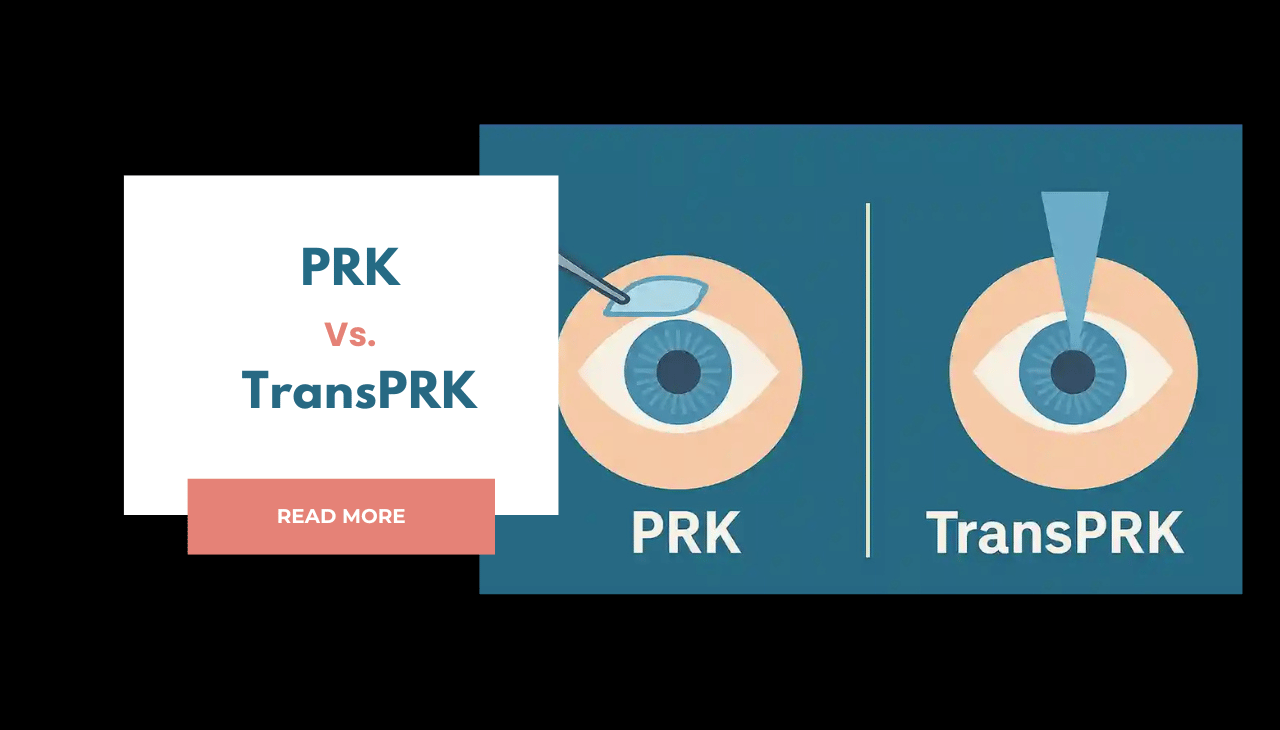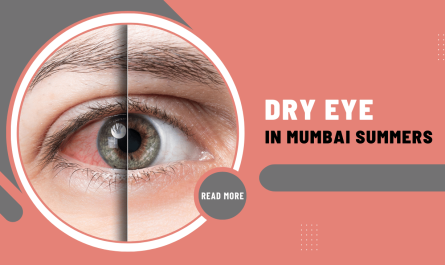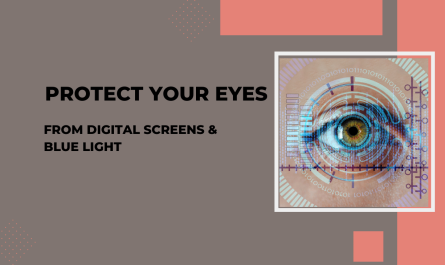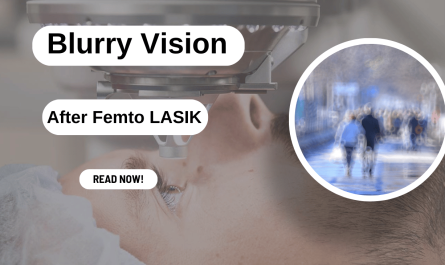Laser vision correction has transformed how people manage nearsightedness, farsightedness, and astigmatism. Among the options available today, PRK and TransPRK are two trusted alternatives to LASIK. If you are exploring your options for vision correction, it’s important to understand the differences between these procedures.
This blog explains what PRK and TransPRK are, how they differ, and which may suit your needs best. It also includes expert insights and consultation details to help you take the next step.
What Are PRK and TransPRK?
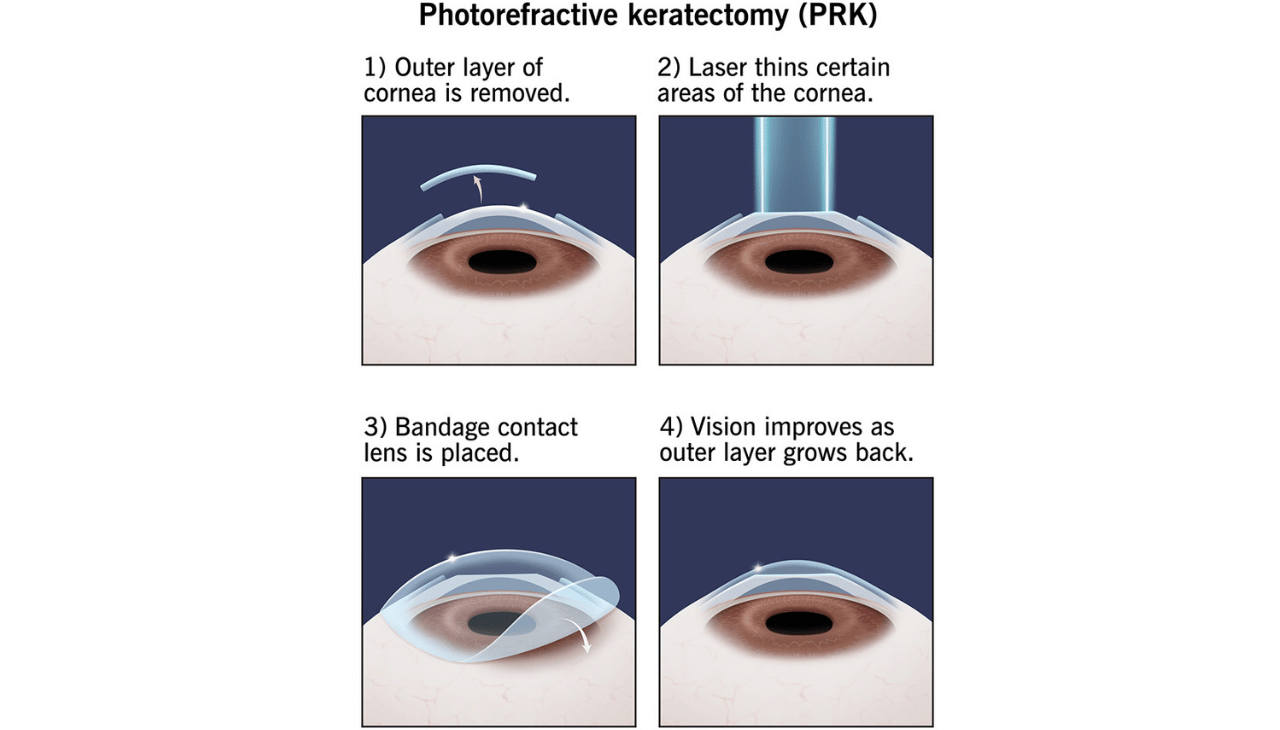
PRK (Photorefractive Keratectomy) was the first type of laser eye surgery approved for vision correction. It involves removing the thin outer layer of the cornea (the epithelium) to allow access to the underlying tissue. An excimer laser then reshapes the corneal surface to correct refractive errors. A soft contact lens is placed on the eye post-surgery to protect it while the epithelium regenerates over a few days.
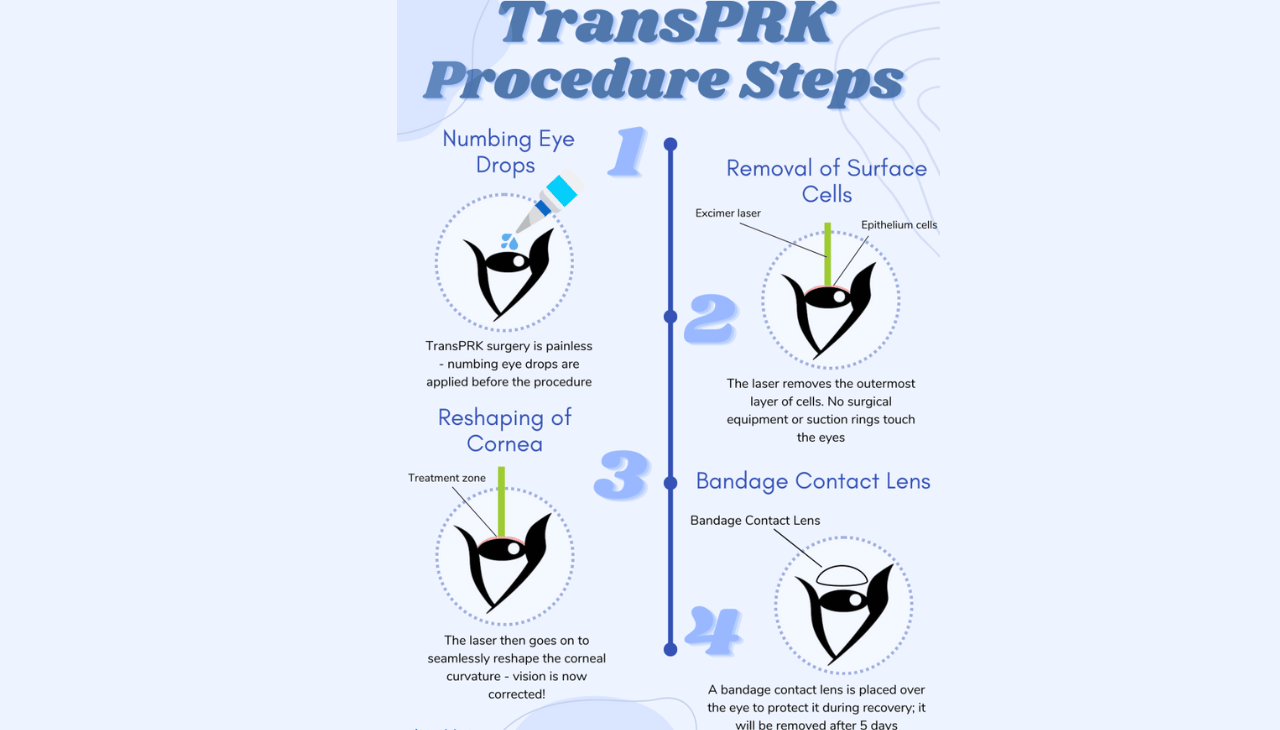
TransPRK (Transepithelial PRK) is a newer, more advanced version of PRK. It eliminates the need for mechanical or alcohol-based epithelial removal. Instead, a precise laser removes both the epithelium and reshapes the cornea in one seamless step. This no-touch method is performed entirely by a computer-guided laser, reducing the risk of human error and enhancing patient comfort.
Both procedures are flapless, unlike LASIK, which involves creating a corneal flap. That makes PRK and TransPRK suitable for people with thinner corneas or certain lifestyle needs.
Why Choose PRK or TransPRK?
These procedures are particularly beneficial for:
- Individuals with thin corneas not suitable for LASIK
- Patients with irregular corneal surfaces
- Those involved in contact sports or physically demanding activities
- Patients with jobs where eye trauma is a risk (military, police, athletes)
- People who have dry eyes or are prone to them
PRK Advantages:
- Long track record of safety and effectiveness
- Excellent visual outcomes
- Suitable for a wide range of prescriptions
- Cost-effective compared to other laser options
TransPRK Advantages:
- No mechanical instruments or alcohol used
- Shorter procedure time
- Reduced post-operative discomfort
- Faster epithelial healing for some patients
- Lower risk of infection due to no-touch approach
Recovery time for both procedures is generally longer than LASIK. Patients may experience blurry vision, sensitivity to light, and mild discomfort for a few days. Full visual recovery can take several weeks. However, the final results are often comparable to those achieved with LASIK.
Comparing PRK and TransPRK Side-by-Side
| Feature | PRK | TransPRK |
| Epithelium Removal Method | Manual or alcohol-based | Laser (no-touch) |
| Pain Level Post-Surgery | Moderate | Typically lower |
| Recovery Time | 5-7 days initial healing | 3-5 days initial healing |
| Risk of Infection | Slightly higher | Lower due to touch-free tech |
| Technology Used | Manual + laser | Fully computer-controlled |
Which Treatment Is Right for You?
Choosing between PRK and TransPRK depends on your eye structure, prescription, lifestyle, and personal comfort with surgical methods.
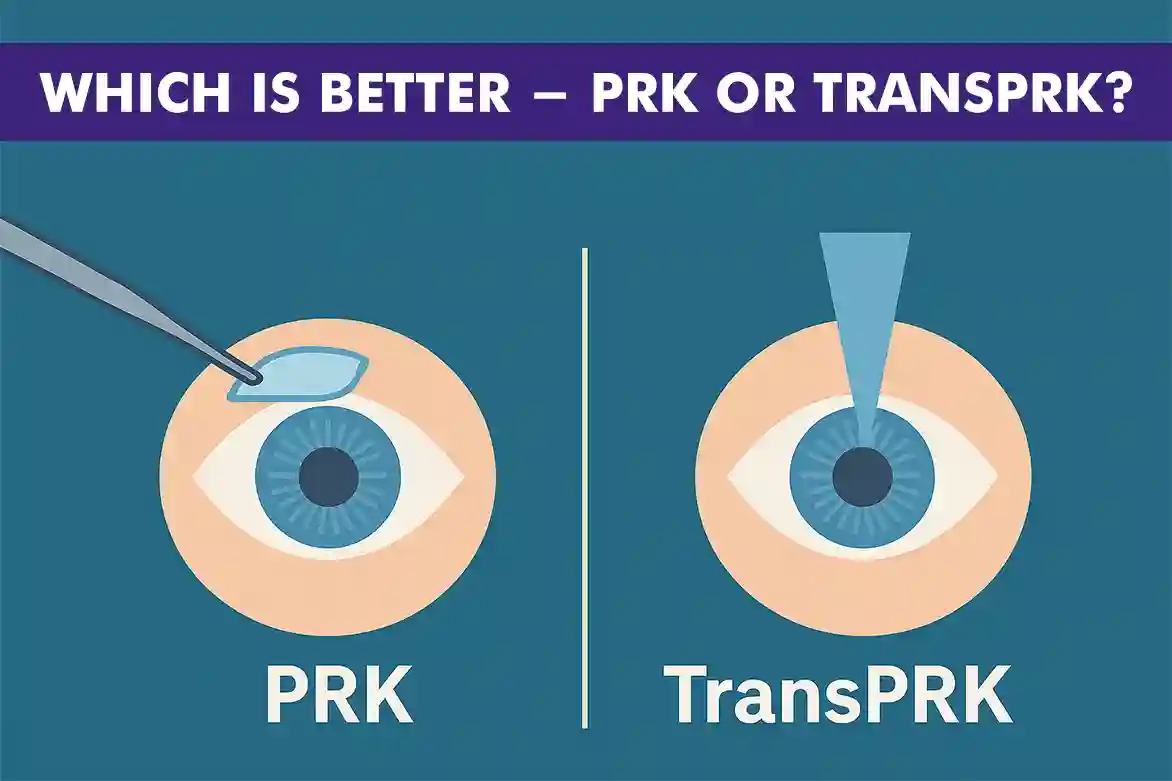
Ask yourself:
- Do you want a completely touch-free procedure?
- Are you okay with a slightly longer recovery for lower cost?
- Do you have corneal irregularities?
A comprehensive eye examination and consultation with an experienced ophthalmologist will help determine the best procedure for your vision goals.
Expert Care You Can Trust
Laxmi Eye Hospital is one of the largest and most trusted chains of eye hospitals in Mumbai. With over 30 years of excellence in eye care, the institute is known for its experienced doctors, transparent practices, and patient-first approach.
The hospital offers advanced diagnostics and treatment for a wide range of eye conditions across Panvel, Kharghar, Kamothe, and Dombivli.
Specialties include:
- Specs Removal / LASIK (Bladeless LASIK, ICL, IPCL, Contoura Vision LASIK)
- Cataract Surgery
- Glaucoma Treatment
- Diabetic Eye Care
- Retina and Cornea Clinics
- Pediatric Ophthalmology
Laxmi Eye Institute also runs highly regarded training programs in cataract surgery and specialty fellowships. Their doctors stay updated with global best practices and regularly perform complex and advanced surgeries.
Clinic Locations:
- Dombivli: 1st Floor, SS Business Park, Gharda Circle, Azde Gaon, Dombivli East, Mumbai, 421201
- Kharghar: Office 108-110, 1st Floor, Anant CHS, Plot 31, Sector 4, Navi Mumbai, 410210
- Panvel: Mulla Hamid Rd, Old Panvel, Navi Mumbai, 410206
- Kamothe: Shop No 26/27, Pratik Gardens, Sector 34, Navi Mumbai, 410209
Book your consultation today to get a personalized vision correction plan tailored just for you.
FAQs
1. Is TransPRK more painful than PRK? Not usually. TransPRK is often less painful due to its no-touch laser approach.
2. How long does it take to recover? Initial healing takes 4-7 days. Most patients achieve stable vision within 2-4 weeks.
3. Are PRK and TransPRK safe? Yes. Both procedures are approved and widely performed worldwide with a high success rate.
4. Can both eyes be treated on the same day? Yes. Simultaneous treatment of both eyes is common and safe.
5. Are the results permanent? Vision correction is long-lasting. Natural aging may lead to the need for reading glasses later.
6. Is there an age limit for PRK or TransPRK? Candidates should be 18+ with a stable prescription for at least 12 months.
7. What are the risks? Mild haze, dry eye, glare, or undercorrection are rare but possible. Most issues resolve with time or follow-up treatment.
8. How do I know which procedure is right for me? Only a certified ophthalmologist can recommend the right procedure after thorough testing.
Final Thoughts
Both PRK and TransPRK offer reliable, flapless alternatives to LASIK. If you’re not a candidate for LASIK or prefer a different approach, these procedures may be your ideal path to clearer vision.
Laxmi Eye Hospital offers expert guidance, cutting-edge technology, and a legacy of patient-centered care. Schedule your consultation and take the first step toward freedom from glasses or contact lenses.

